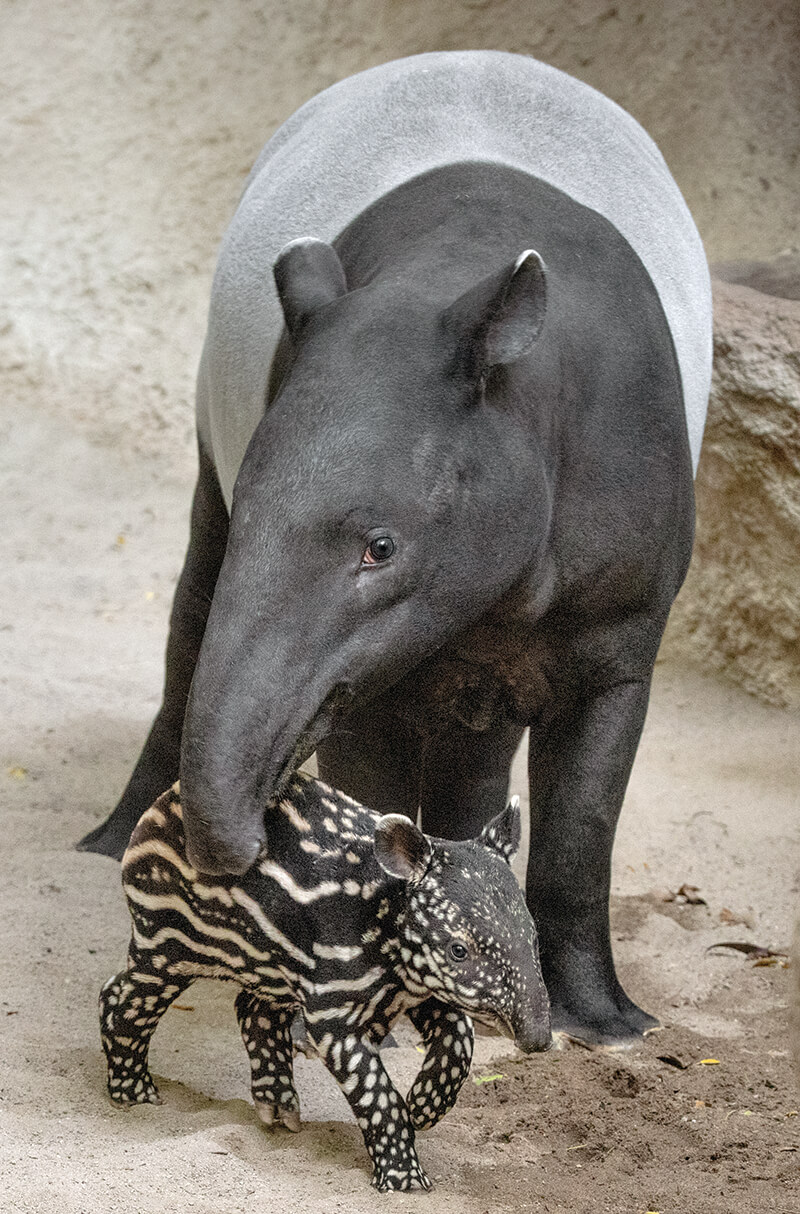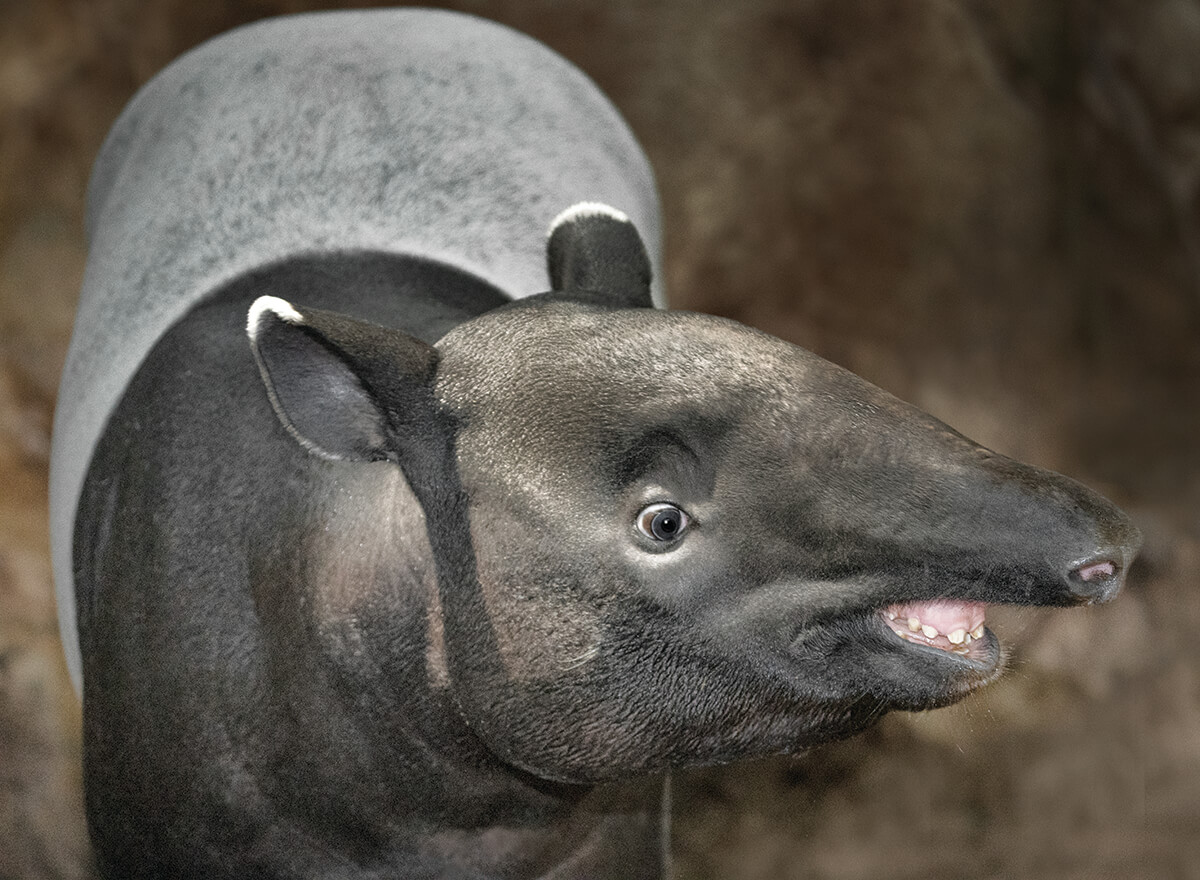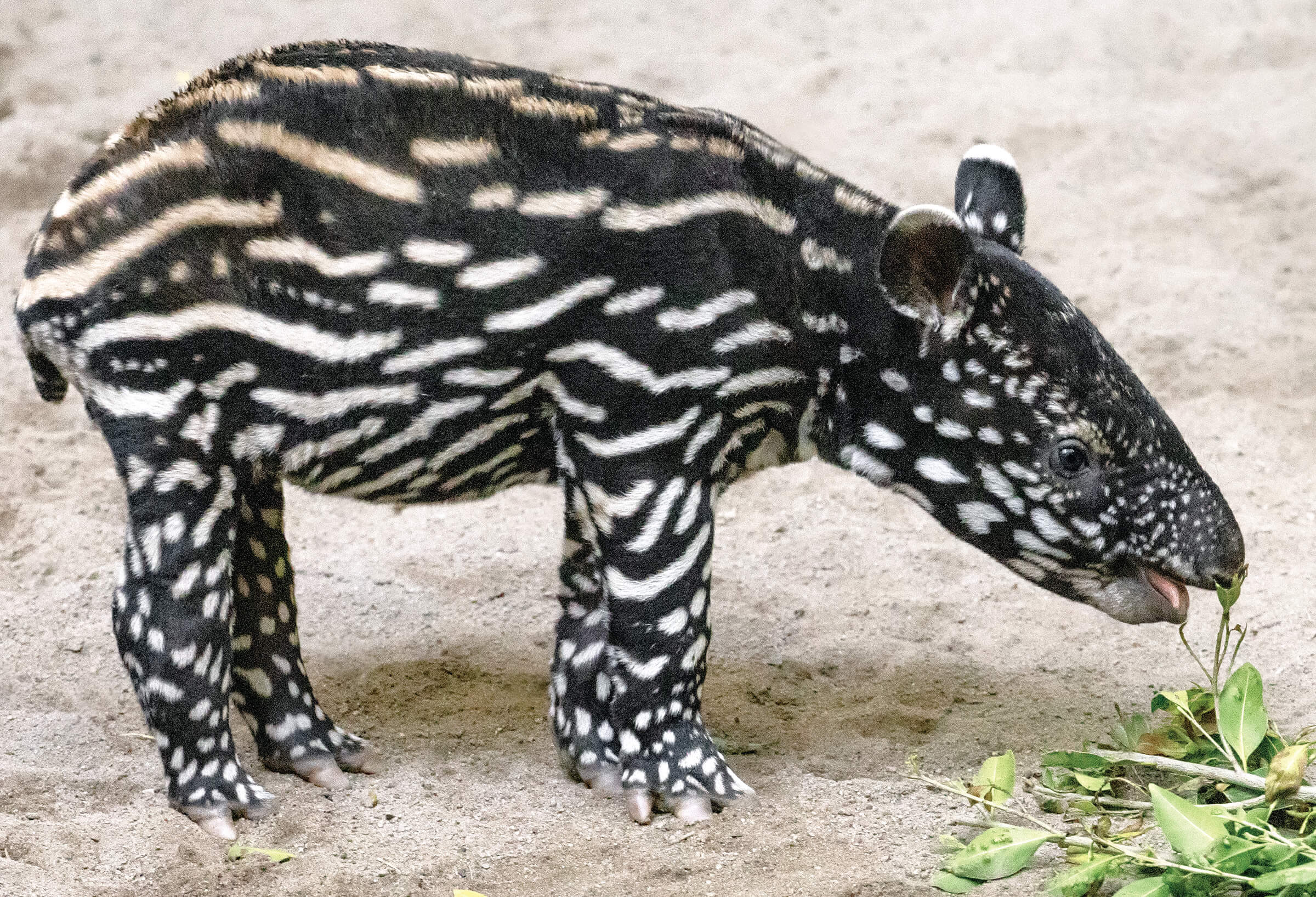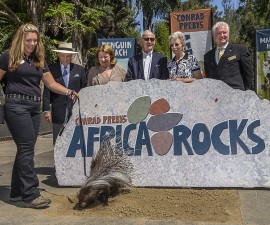BY Peggy Scott
New Calf Boosts Malayan Tapir Population
Weighing just over 17 pounds at birth and sporting the characteristic tapir neonate coat pattern, the Malayan tapir calf born at the San Diego Zoo on March 16, 2021 resembled a spotted-and-striped watermelon on four legs. But the truth is, the prehensile-snouted little male represents hope for his kind, which face declining population numbers. As is the case with all endangered species, the importance of every individual addition is multiplied. And San Diego Zoo Wildlife Alliance is dedicated to helping the numbers work in the tapirs’ favor. For the first time in more than a decade, the birth of a Malayan tapir calf at the Zoo gives our wildlife care specialists the opportunity to observe the maternal behavior and development process of a species that has existed for millions of years.

Tapirs are primarily crepuscular, meaning they are active at dawn and dusk, when it’s cooler; but after-dark foraging isn’t out of the question.
A Living Fossil
Also called the Asian or Indian tapir, the Malayan tapir Tapirus indicus is the largest of the four species of tapir (the other three are the Baird’s tapir, lowland tapir, and mountain tapir), and the only one native to Asia. Tapirs are regarded by some as living fossils, having been around since the Eocene Epoch (56 to 33.9 million years ago). Their prehensile nose has led many people to mistake them for anteaters, pigs, or elephants, but they are odd-toed ungulates—a group that includes horses and rhinoceroses.
Adult Malayan tapirs are easily identified by their markings—unlike their brownish relatives, this subspecies is black top and bottom, with a light-colored, saddle-type patch that runs from the shoulder to hind legs. The pattern is believed to act as camouflage, with the disrupted coloration breaking up the tapir’s outline and making it more difficult to recognize in a dark forest; predators may mistake it for a large rock, rather than a potential meal. In contrast, tapir calves—regardless of species—are born with a similar mottled watermelon pattern on their hide, which may mimic the dappled sunlight of a forest. They blend right in. Malayan tapirs measure 6 to 8 feet long at adulthood and weigh from 550 to 700 pounds, with females larger than males. They stand 3.5 feet tall at the shoulder of their large, barrel-shaped bodies.

A tapir’s prehensile snout can move in any direction—and even serve as a snorkel in water. Like an elephant’s trunk, it is actually a combination nose and an upper lip.
Gardeners of the Forest
With a range that includes Myanmar and Thailand south to Malaysia and Sumatra, Malayan tapirs inhabit tropical lowland swamps and montane and hill forests, preferring dense, primary forests. There are fewer than 2,500 adult Malayan tapirs left in their native range, and it’s hard to overstate the ancillary effects of their shrinking numbers on their ecosystems. Tapirs are referred to as “gardeners of the forest” because of how much they influence their native landscape. Their major role is that of seed disperser. Tapirs eat a variety of seasonal fruits; when fig or mango trees come into season, tapirs can often be found underneath these trees, eating fruit that falls or is dropped by monkeys. The seeds of the fruits they eat are dispersed when they move to a new location to deposit scat, and some of those seeds will later sprout and grow new trees, helping the forest to regenerate.
Along with spreading seeds, tapirs affect the biodiversity of tropical ecosystems. These large herbivores require a sizeable range in order to thrive, and they are known as an “umbrella species,” because their wide-ranging habitat also includes monkeys, deer, wild cats, and numerous species of reptiles and birds. All the wildlife in the tapirs’ range benefits when we protect tapirs. As is the case around the globe, habitat destruction and fragmentation tops the list of challenges faced by Malayan tapirs. People, as well as tigers, hunt them for meat. The loss of tapirs in a local area can lead to disruptions of some key ecological processes (such as seed dispersal and nutrient recycling), and eventually compromise the long-term biodiversity of the ecosystem. This illustrates the San Diego Zoo Wildlife Alliance concept of “when wildlife thrives, all life thrives.”
Malayan Tapirs at the San Diego Zoo
The Zoo’s new, as-yet-unnamed male calf is the picture of young ungulate health. As Aimee Goldcamp, senior wildlife care specialist, reports, he is meeting—even surpassing—developmental milestones. “He was standing within an hour of birth, and nursing within two,” Aimee says. “And in his first two weeks of life, he more than doubled his size.”
This is tapir dam Amirah’s first calf, and she has cared well for him from the beginning. He learned from her example, mouthing solid food items within four days of birth and eating mashed banana at one week. By June 15, 2021, he was tipping the scale at 139 pounds. Aimee adds that the calf fully participates in his weekly weigh-ins, noting that the decision to stand on the scale is his choice.
The Malayan tapir is on Tiger Trail at the Zoo, just up the path from the tiger habitat. The energetic youngster’s newest discovery is the habitat’s shallow pool, and he’s making quite the splash.
Peggy Scott is a senior editor for SDZWA; Ken Bohn is an SDZWA photographer.





